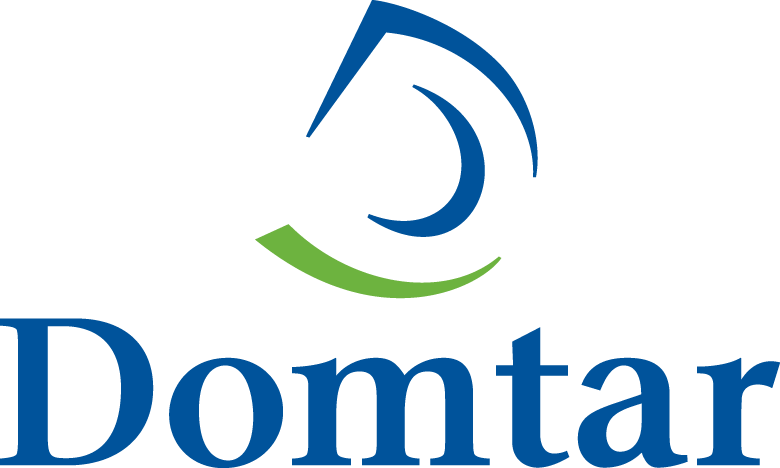Widening the Circle of Circularity Yields an Internal Win‑Win
Domtar is increasingly designing our production and materials management systems to align with circular economy principles. This includes minimizing the amount of resources we use, keeping them in use for as long as possible and extracting maximum value from them.
These efforts are enhanced through our continuous improvement initiatives and engineering innovations focused on increasing our manufacturing efficiencies and turning more of the materials we handle into saleable products.
We continue to make progress in finding beneficial-use options for our manufacturing byproducts, driven by a disciplined, companywide approach to defining, measuring and reporting byproduct streams.
We are also sharing best practices across our facilities to build on our success. Together with external experts and partners, we continue to evaluate opportunities to redirect additional byproducts for beneficial, higher value uses.
Turning our manufacturing byproducts into usable products is just one of the ways Domtar works to operate efficiently and responsibly. While these efforts reduce costs, they can also help balance soil chemistry and increase crop yields for local farmers. In addition, reusing byproducts keeps the material out of landfills.
In 2020, we beneficially reused 71% of our pulp and paper manufacturing byproducts, compared to an industry average of 46%.*
“We continually look for ways to make the most of natural resources,” says Brian Kozlowski, director of environment and sustainability at Domtar. “When these resources can have a second life — whether in our own manufacturing or in agriculture — we see benefits across the environment.”
Take, for example, our use of lime manufacturing byproducts to treat acidic wastewater.
*2020 American Forest & Paper Association Sustainability Report Additional Environmental Indicators
We continue to make progress in finding beneficial-use options for our manufacturing byproducts, driven by a disciplined, companywide approach to defining, measuring and reporting byproduct streams.
Lime improves chemical balance
One mill’s “trash” is another mill’s “treasure.” Our Nekoosa and Rothschild mills have discovered a mutual benefit to the lime byproduct produced in the process of making pulp.
The two mills, located about 50 miles apart in Wisconsin, use different processes for pulping, one of the earliest stages of papermaking. These processes leave Nekoosa with excess lime residuals and Rothschild with acidic wastewater.
These collective efforts have helped the company achieve a 34% reduction in the total amount of materials our mills have sent to landfill since 2013.
Nekoosa’s leftover lime, which has a high pH, can help neutralize the wastewater at Rothschild before it enters the mill’s treatment plant.
Environmental engineers, Afton Pumper at Nekoosa and Matthew Tlachac at Rothschild, put their heads together for a solution that would benefit both sites.
“We were just landfilling much of the lime,” Pumper says. “Local farmers take some of it, but we still were using the landfill for the excess.”
And Rothschild, which had been using a lime byproduct from a different manufacturer to neutralize its wastewater, was losing its source of lime.
Teams at the two mills worked out the details to begin trials using lime from Nekoosa to treat the wastewater at Rothschild.
“It’s a win-win,” says Kozlowski. “For Rothschild this reduces the cost of buying lime from an outside source. For Nekoosa it reduces waste going to landfill. Every effort large or small contributes to our efficiency and good stewardship of these resources.”
These collective efforts have helped the company achieve a 34% reduction in the total amount of materials our mills have sent to landfill since 2013.


